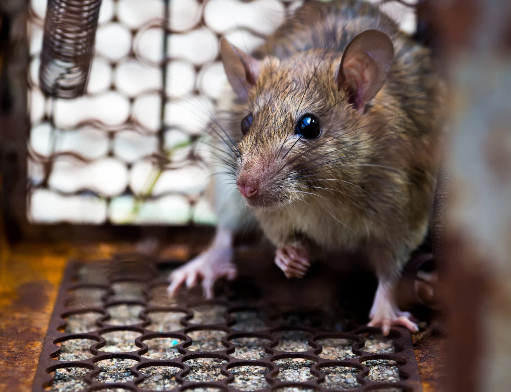
Rat extermination
Rats are more than just a nuisance—they pose serious threats to human health, contaminate food sources, and cause significant structural damage to buildings. Whether in urban neighborhoods, rural homes, or commercial properties, a rat infestation is a pressing issue that demands immediate attention. Understanding the basics of rat extermination can help homeowners and business owners alike protect their environments from these invasive pests.
Understanding the Rat Problem
Before jumping into extermination methods, it’s important to understand why rats are such a persistent problem. Rats are highly adaptable creatures. They can survive in a wide range of environments, reproduce rapidly, and are nocturnal, making them difficult to detect until the infestation is already significant.
Common Signs of a Rat Infestation
Identifying an infestation early is key to successful extermination. Here are some signs to look for:
-
Droppings, especially near food packages, in drawers, or under the sink
-
Gnaw marks on wires, furniture, and food containers
-
Grease marks or trails along walls and baseboards
-
Scratching noises, particularly at night
-
Burrows or nests made from shredded materials
Why Rat Extermination Is Essential
Rats are more than just a dirty presence—they can carry over 35 diseases transmittable to humans through direct contact, urine, droppings, and bites. Diseases such as leptospirosis, hantavirus, and salmonella are all associated with rodent exposure. Additionally, rats can cause electrical fires by chewing through wiring, and they often damage insulation and structural wood, leading to expensive repairs.
Approaches to Rat Extermination
There is no one-size-fits-all solution to rat extermination. Effective rodent control typically requires a combination of methods tailored to the severity and location of the infestation.
Trapping Methods
Trapping is one of the most common and humane ways to deal with a rat problem. Snap traps and electronic traps are widely used for their efficiency.
-
Snap Traps: These traditional traps kill rats instantly. They should be placed near signs of rat activity, such as droppings or gnaw marks.
-
Electronic Traps: These deliver a high-voltage shock to instantly kill the rat. They are more expensive but offer a clean and effective solution.
Live traps are also available for those who prefer not to kill the rats, although they require careful handling and relocation far from your property to prevent a return.
Poison Baits
Rodenticides are chemical poisons used to kill rats, often in the form of bait blocks or pellets. While effective, they come with significant risks:
-
Potential poisoning of pets and children
-
Rats dying in inaccessible locations, causing odor issues
-
Resistance developing in some rat populations
Because of these dangers, poison baits are best used by professionals who know how to apply them safely and effectively.
Natural and Non-Toxic Methods
For those who prefer eco-friendly solutions, several natural methods can help deter and control rat populations:
-
Peppermint Oil: The strong scent can repel rats, though it’s usually not strong enough for large infestations.
-
Ultrasonic Devices: These emit high-frequency sounds that are unpleasant to rodents. Effectiveness is debated, and results vary.
-
Natural Predators: Encouraging the presence of owls or adopting a cat can help keep rat populations under control.
While these solutions are generally safer, they are usually more effective as preventive measures rather than extermination tactics for established infestations.
Sealing Entry Points and Preventing Future Infestations
Even after successful extermination, the job isn’t over. To ensure rats don’t return, it’s crucial to seal off entry points and remove sources of attraction.
Identify and Seal Gaps
Rats can squeeze through holes as small as a quarter. Check for and seal gaps around:
-
Foundation and siding
-
Pipes and vents
-
Roof edges and eaves
-
Doors and windows
Use steel wool, caulk, and metal mesh to block access, as rats can chew through softer materials like wood or plastic.
Maintain a Clean Environment
Rats are scavengers, always in search of food and shelter. Simple cleanliness goes a long way in keeping them at bay:
-
Store food in airtight containers
-
Dispose of garbage regularly
-
Keep outdoor areas free of clutter and overgrown vegetation
-
Fix leaks and eliminate standing water
When to Call a Professional Exterminator
DIY methods may work for small infestations, but if you see multiple rats during the day, hear frequent noises in the walls or attic, or spot extensive droppings and damage, it’s time to call in the professionals.
Professional exterminators have the tools and expertise to:
-
Assess the extent of the infestation
-
Apply targeted treatments with maximum safety
-
Set up exclusion barriers to prevent reentry
-
Monitor for future activity and perform follow-ups
They can also provide insights into long-term prevention strategies tailored to your specific environment.
Conclusion
Rat extermination is a critical step in maintaining a safe and healthy living environment. Whether you opt for traps, natural deterrents, or professional services, the key is to act quickly and remain vigilant. Rats are not just a nuisance—they’re a serious threat to your home, health, and peace of mind. With proper techniques and ongoing prevention, you can rid your property of rats and keep it rodent-free for the long haul.




